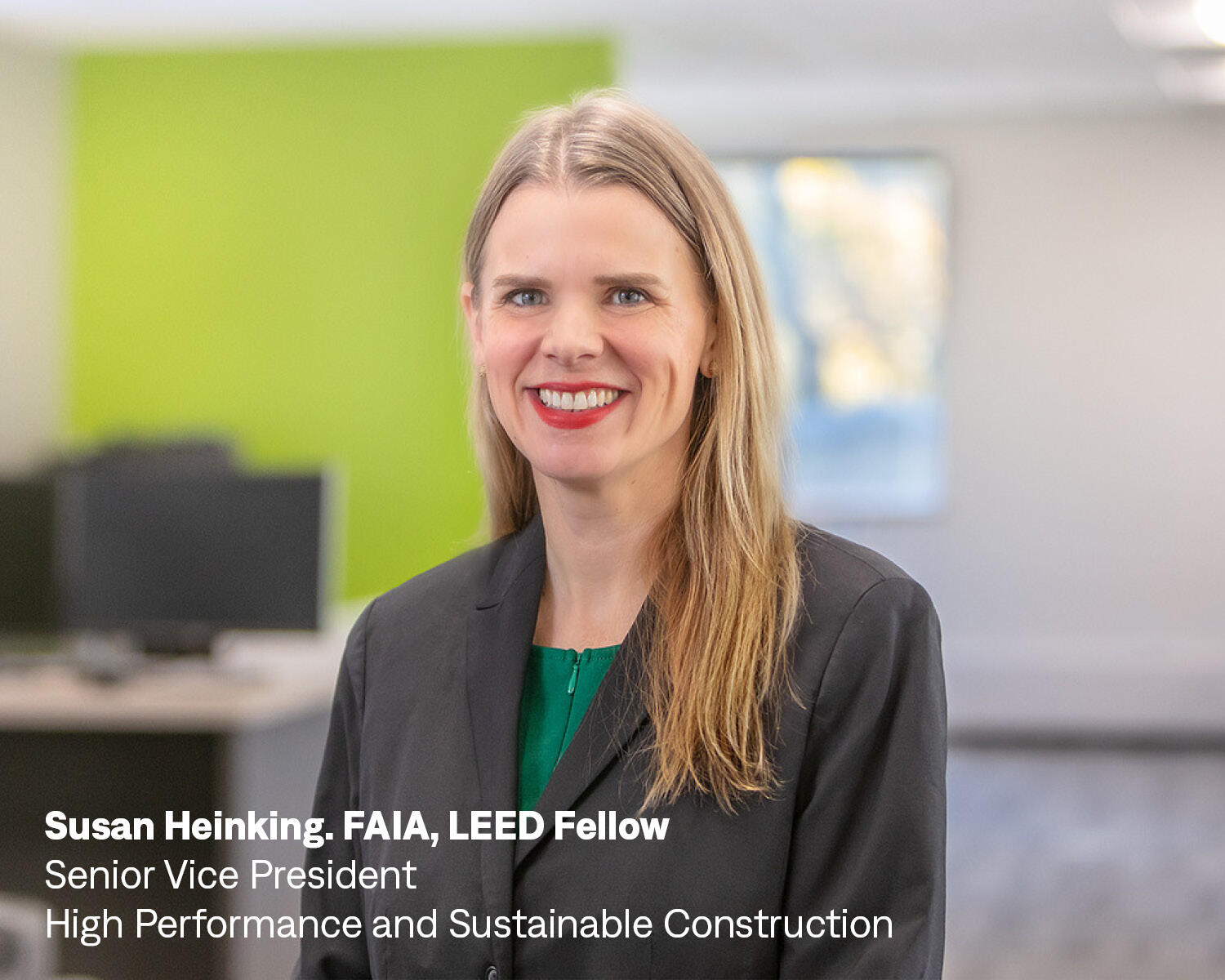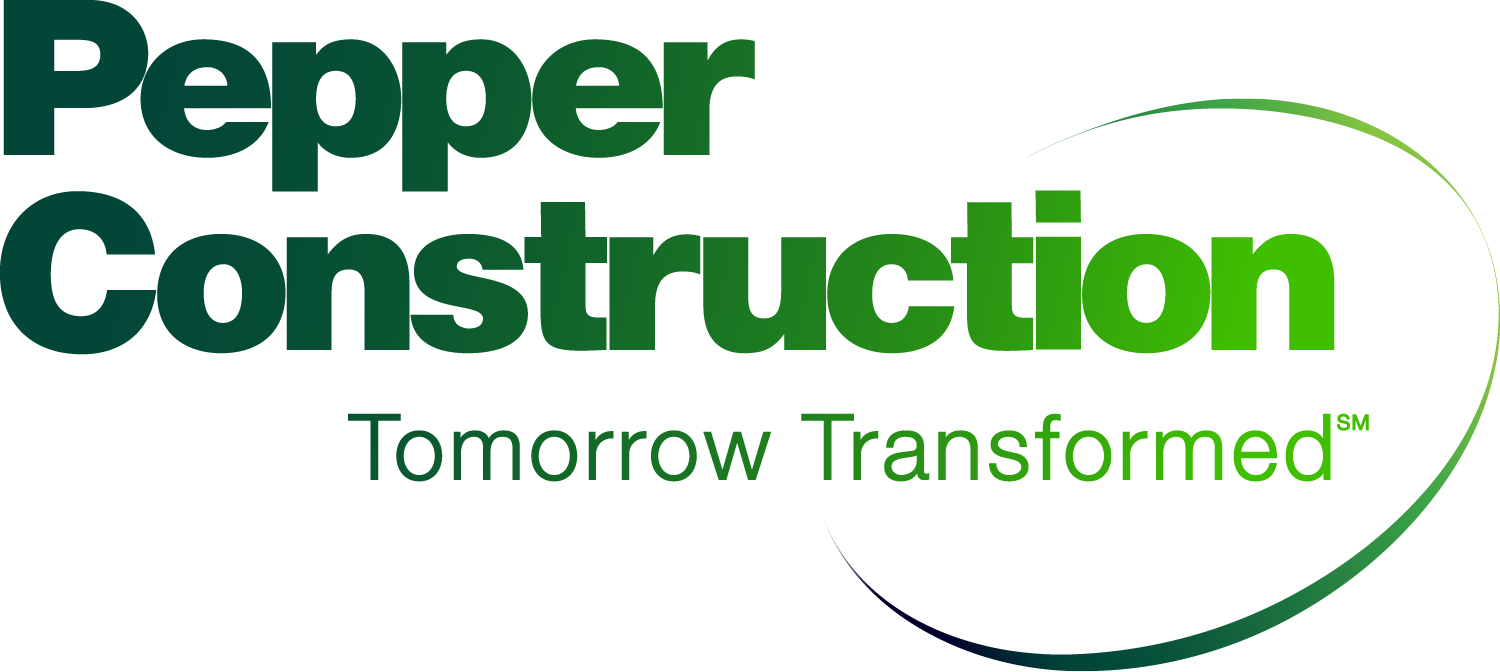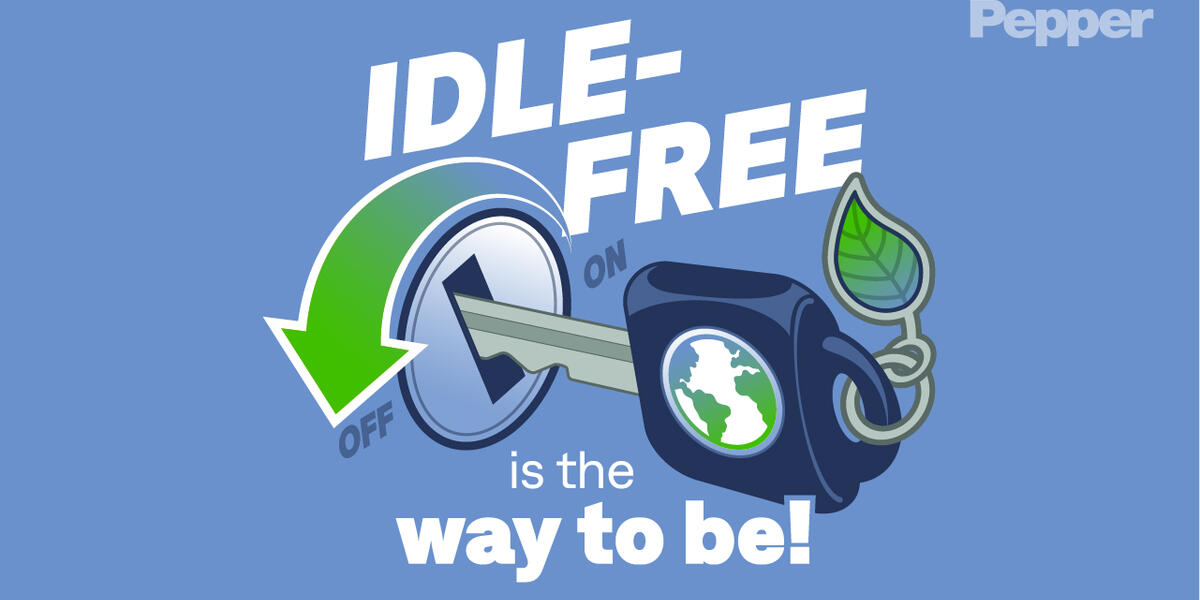On April 22, 2025, Earth Day will turn 55, with 192 countries and more than 1 billion people around the globe expected to recognize this milestone. The Earth Day movement remains as dedicated and diverse today as it was back in 1970 by bringing everyone together for a better future.
As our part of the celebration, the Pepper Green Week theme this year is "Idle Free is the way to be." The campaign is aligned with our effort to find ways to make a sustainable commitment to our planet and take another step toward creating a healthier work environment for everyone.
To provide her perspective on going Idle Free and explain Pepper's commitment to the Earth Day movement, we spoke with the leader of Pepper's high-performance and sustainability team, Senior Vice President Susan Heinking, FAIA, LEED Fellow.

Q: What is the thinking behind Pepper's "Idle Free is the way to be" program and why did you choose to launch it in conjunction with Earth Day and Pepper Green Week this year?
Susan: At Pepper, we're always looking for ways to make construction jobsites healthier. After all, jobsites are workplaces too. No one would expect office workers to tolerate poor air quality in their workspace. We want to protect our employees, trade partners and others who visit our sites throughout the construction process by treating them the same way. By reducing idling emissions on our jobsites, we can significantly cut down on pollution, improve air quality and contribute to the global effort for a healthier planet.
Tying this initiative to Earth Day and Pepper Green Week just makes sense. This small change in our daily operations can have a profound impact on the environment and continues our dedication to sustainable and responsible business practices. Reducing idling is also beneficial for our health. Prolonged exposure to vehicle emissions can lead to respiratory issues and other health problems. By minimizing idling, we are taking a proactive step to ensure cleaner air and a safer workplace for everyone - everywhere we work.
Q: What are the primary elements of "Idle Free is the way to be" at Pepper?
Susan: We have a comprehensive plan for going idle free that is being rolled out this week. Some of the key components include the following:
- Toolbox Talks and videos led by our Safety teams
- No Idling jobsite signage
- Helmet stickers to help raise awareness
The key to Pepper's plan is that we will not allow engines to idle for more than five minutes. At that point or preferably before, the engine will need to be turned to the off position. We're going to do everything we can onsite to keep it top of mind for everyone to result in a change in behavior.
No idling is definitely a trend that is growing across all job sites. It's the way that our industry is pivoting, and the result is going to be cleaner air, less gas used and an overall reduction in people's and companies' carbon footprints.
Q: What other initiatives are tied to the no-idling effort?
Susan: One example is with the new LEED v5 building certification that specifies a Clean Construction Pilot Credit, projects can be rewarded for implementing a plan to reduce particulate matter emissions from diesel-fueled vehicles, equipment and generators used during construction. This reduces the carbon footprints on our jobsites.
Pepper put this new tool to work by piloting the credit at The University of Illinois Urbana-Champaign Campus Instructional Facility. While constructing the new building, we enforced a no-idling policy for trucks and cars that also prioritized electric tools and equipment, contributing to the project's LEED Platinum certification.
The University of Illinois Urbana-Champaign Campus Instructional Facility

The five-story, 124,130-square-foot building includes 24 classrooms, seven team rooms and informal study spaces throughout. The classrooms inspire collaboration by accommodating a mix of traditional, active, theater and in-the-round learning styles. A 500-seat auditorium is located in the basement. The building is designed to meet significant sustainability goals, with features that include geothermal and radiant heating and cooling, improved air quality through low VOC materials and dynamic glazing to mitigate solar gain on the east and west facades.
Awards & Certifications
- LEED Platinum
- USGBC, Illinois - Market Leadership Design and Construction Award
Q: As someone who has dedicated her career to high performance and sustainability, what drew you to the cause and why is the environment such a natural area of focus for the design and construction industries?
Susan: I first fell in love with sustainable design during my undergraduate studies to become an architect. I was in awe of the idea that a building could be a living, breathing machine that responded to its surroundings and climate, being solely self-reliant. . Throughout my entire career I have been focused on integrating sustainability into architectural design and construction. The built environment represents 39% of the world’s carbon emissions, presenting our industry with an enormous opportunity for meaningful impact. Today, as both a LEED Fellow and an AIA Fellow, I have the unique opportunity to increase the number of sustainable buildings we build. Some days are more challenging than others, but it’s incredibly rewarding. I'm committed to my professional goal to enhance people’s lives through the built world. And my personal goal is to simply leave the world better than I found it.
Q: After 10 years at Pepper and 22 years in the design and construction industry, what is the biggest change you’ve seen in high performance and sustainability? What do you expect or hope to see in the next 25 years?
Susan: I think one of the biggest changes has been in the increased general acceptance of - supported by an increased demand for - sustainable buildings. It has truly been a market transformation to get to where we are today. But there is so much more that can still be done. People are beginning to understand and accept some common truths, such as the fact that we spend 90% of our time inside, and we are still creating a toxic world, which is obviously tied to what and how we build. We have to accept the constant challenge to do better.
What I hope to see in the next 25 years is that sustainable building become commonplace. It's just the right way to do things, and I think we're on the path to get there. Each step we achieve sets a new precedent that others can build on.
Q: After 55 Earth Days, if people could have just a “lightbulb moment" of understanding and permanently change one behavior in their everyday lives, what would it be?
Susan: Turn off the lights or use sensors! It is important for us to take control over our environment to save energy, reduce carbon and save money. Instead of being wasteful or lazy, be a smart user of your home or building. It all adds up to make a big difference.
Q: If people want to learn more about going idle free, what is a good resource?
Susan: There are lots of great resources out there about high performance and sustainability, as well as the link between our built environment and our natural environment. To help you go Idle Free, the Department of Energy has several resources and fact sheets that can help you learn more for both for commercial and personal vehicles.
This Pepper Green Week please join us in creating create healthier environments and making a positive difference for both our planet and our own well-being. Together, we can lead by example and inspire others to make every day Earth Day.
About the Authors



